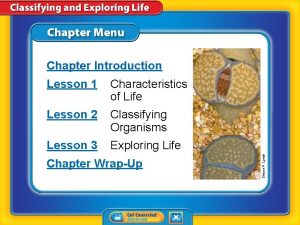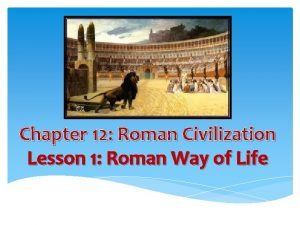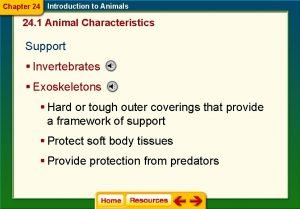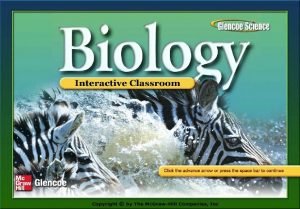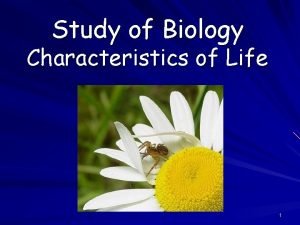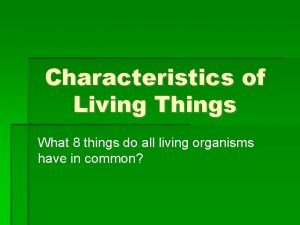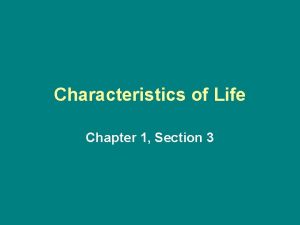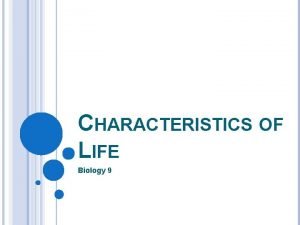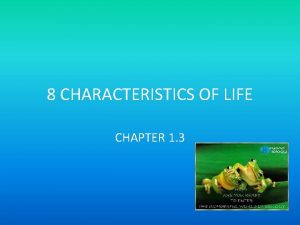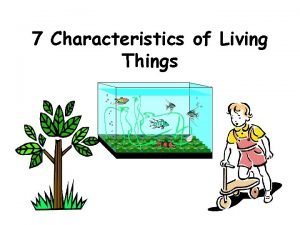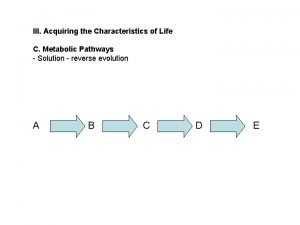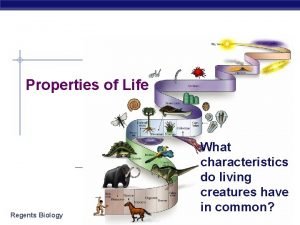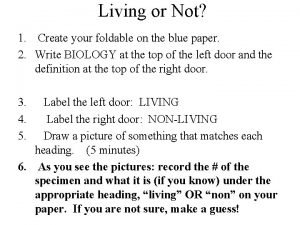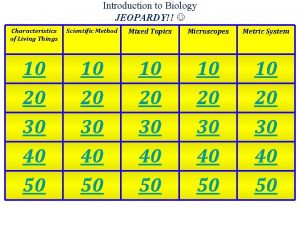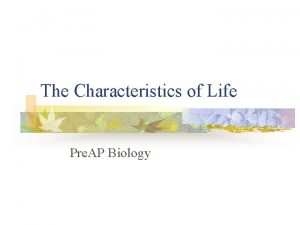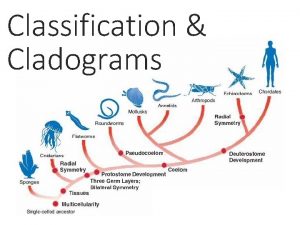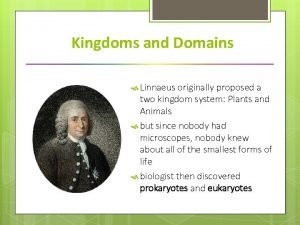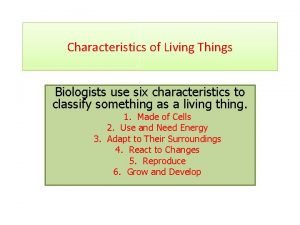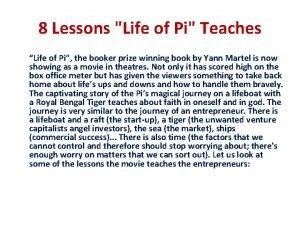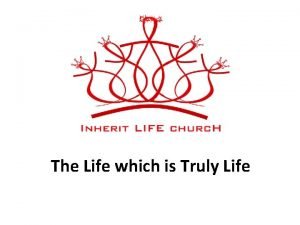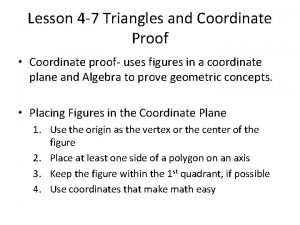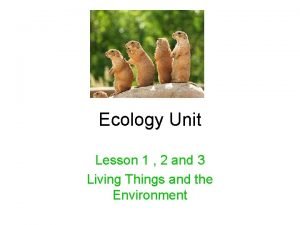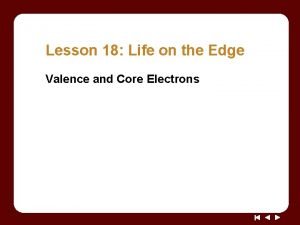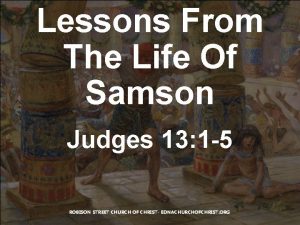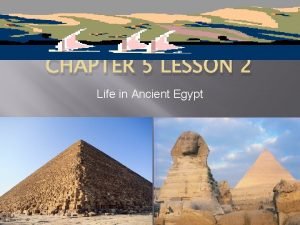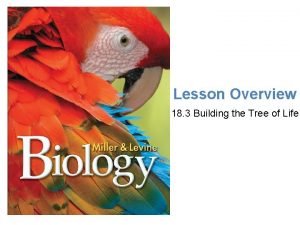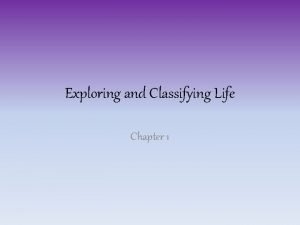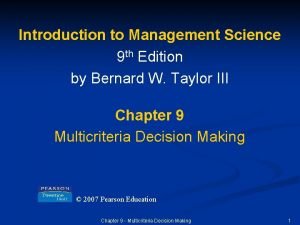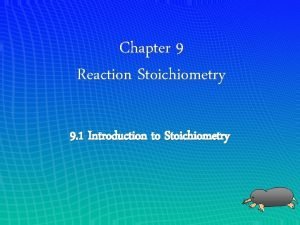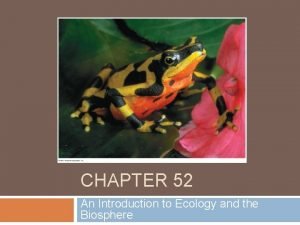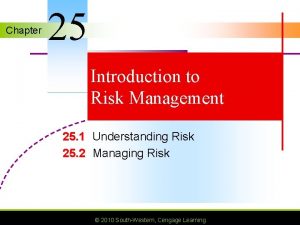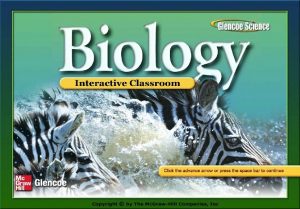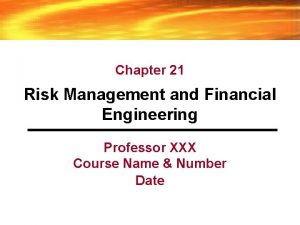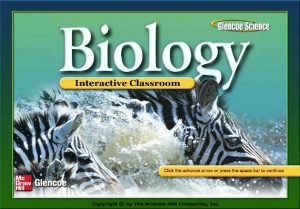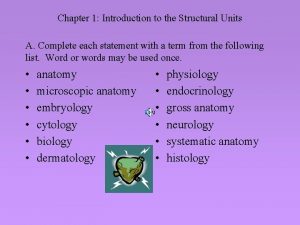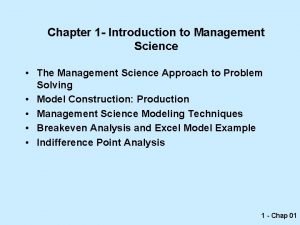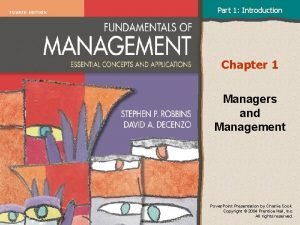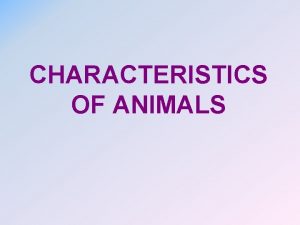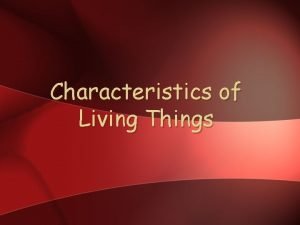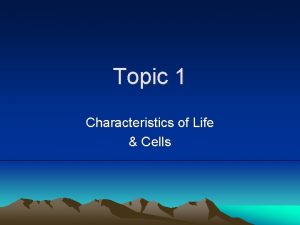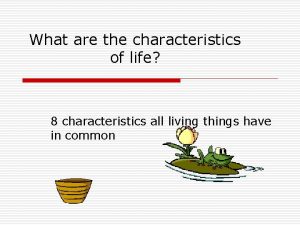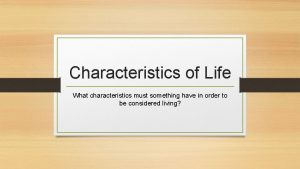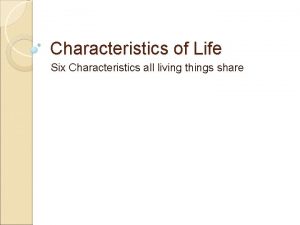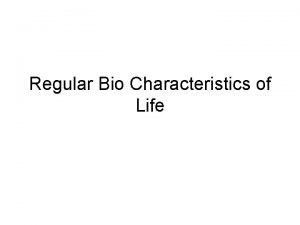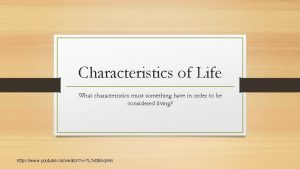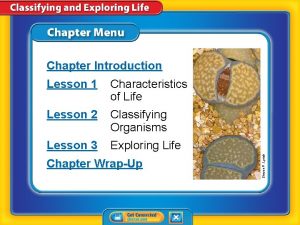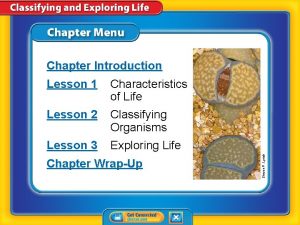Chapter Introduction Lesson 1 Characteristics of Life Lesson





























































































- Slides: 93

Chapter Introduction Lesson 1 Characteristics of Life Lesson 2 Classifying Organisms Chapter Wrap-Up Steven P. Lynch Lesson 3 Exploring Life

Chapter Introduction What are living things, and how can they be classified?

Do you agree or disagree? 1. All living things move. 2. The Sun provides energy for almost all organisms on Earth. 3. A dichotomous key can be used to identify an unknown organism.

Do you agree or disagree? 4. Physical similarities are the only traits used to classify organisms. 5. Most cells are too small to be seen with the unaided eye. 6. Microscopes are used only by scientists.

Characteristics of Life • What characteristics do all living things share?

Characteristics of Life �All living things are organized, grow and develop, reproduce, respond, maintain certain internal conditions, and use energy. �Organisms –Things that have all the characteristics of life are called

Organization �Cell - every organism’s smallest unit of life. �Unicellular - organisms are organisms made of only one cell. �Living things that are made of two or more cells are called multicellular organisms.

Growth and Development �Changes that occur in an organism during its lifetime are called development. �In multicellular organisms, development happens as cells become specialized into different cell types. �Some organisms have dramatic developmental changes, such as a tadpole becoming a frog.


Reproduction �Reproduction is the process by which one organism makes one or more new organisms. �Some organisms can reproduce by dividing and becoming two new organisms. (Asexual) �Some organisms must have a mate to reproduce, but others can reproduce without a mate. (Sexual)

Responses to Stimuli �All living things respond to changes in the environment called stimuli. There are two types of stimuli: • Internal stimuli are changes within an organism. • External stimuli are changes in an organism’s environment.

Homeostasis An organism’s ability to maintain steady internal conditions when outside conditions change homeostasis from Greek homoios, means “like, similar”; and stasis, means “standing still”

Homeostasis (cont. ) Maintaining homeostasis ensures that cells and the organism can function normally and remain healthy.

Homeostasis (cont. ) Contractile vacuoles are cellular structures that help maintain homeostasis by pumping excess water from the cell.

Energy �Cells continuously use energy to transport substances, make new cells, and perform chemical reactions. �For most organisms, energy for life comes from the Sun. The Sun’s energy can be passed from one organism to another.


Lesson 1

• An organism has all the characteristics of life.

• a • to Unicellular organisms have specialized structures, much like house has rooms for different activities. Homeostasis enables living things maintain a steady internal environment.

Review Questions � What term refers to things that have all the characteristics of life? � What are the two types of reproduction and give an example of an organism that undergoes this type of reproduction. � Homeostasis refers to an organism’s ability to maintain what kind of conditions?

What term refers to things that have all the characteristics of life? A. B. C. D. cells unicellular organisms multicellular organisms

Which of these refers to changes in an organism’s environment? A. B. C. D. external stimuli homeostasis internal stimuli development

Homeostasis refers to an organism’s ability to maintain what kind of conditions? A. B. C. D. external internal cellular environmental

Classifying Organisms • What methods are used to classify living things into groups? • Why does every species have a scientific name?

Why classify? ? �It’s a big confusing mess out there �Someone has to sort it all out…can you?

How long would it take you to find a good outfit?

How long would it take you to find a good outfit?

Early classification �Aristotle places all organisms into two groups �Plants and Animals

Determining Domains �Systematics (current classification system) uses the following to classify • • • cell type how food and energy are obtained structure and function of features common ancestry molecular analysis (DNA)

Organisms are classified into three domains 1. Bacteria- are bacteria 2. Archaea- old bacteria 3. Eukarya- everything else (like you)

Classifying Living Things �Carolus Linnaeus classified organisms into two main groups, called kingdoms, based on similar structures.

Scientific Names (cont. ) �Binomial nomenclature (2 name- name) was developed by Linneus �Each specie has its own scientific name that is used worldwide!

Scientific Names �Binomial nomenclature is a system for naming organisms with two-word scientific name: • Species - is a group of organisms that have similar traits and are able to produce fertile offspring. • Genus - is a group of similar species.

MODERN CLASSIFICATION SYSTEM: �DOMAIN �KINGDOM �PHYLLUM �CLASS �ORDER �FAMILY �GENUS �SPECIES

HOW TO REMEMBER THAT: �Da KING PHILIP CAME OVER FOR GOOD SOUP

Some common Species (In Binomial) Bombini bombus Carcharodon carcharias

Canis lupus Canis fimiliaris Common ancestor? Evolutionary relationship seen in name? ?


Review �Why do we classify? �What is the two name system of classification called? Who created it? �What is the correct way to write the following using binomial nomenclature ( acer saccharum) --- maple tree

Lets try it ourselves! �We can pick a random animal and go to (wikipedia-ohh no!!!) �Upon taking its genus and species name we will have its scientific or binomial name

Intro to using a Dichotomous Key SWBAT �Identify the functions of a dichotomous key �Explain how a dichotomous key is used �Use a key to identify several “unknown” organisms

Classification Tools (cont. ) A dichotomous Key is a series of descriptions arranged in pairs that lead the user to the identification of an unknown organism.

You have just discovered the leaf unknown organism! Q: What is the easiest way to find out what tree this leaf came from? A: You could always ask an expert “Botanist” or you could use a dichotomous key

Dichotomous- two choices �A two choice key �Organisms are identified based on observable features �Follow the steps on the key and you will accurately identify your organism

Name that Leaf! Leaf Dichotomous Key 1. a. Does the leaf have smooth edges? ------ Lefius smoothius b. Does the leaf have rough edges? ------- to to step #2 2. a. Is the leaf oval shaped? -------go to step #3 b. Is the leaf broken into 5 sections? ------- Acer saccarum 3. a. leaf comes to a point----- Ulmus americana b. does not come to a point ----- Ulmus rubra

Name this leaf! Leaf Dichotomous Key 1. a. Does the leaf have smooth edges? ------ go to step #2 b. Does the leaf have rough edges? ------- to to step #3 2. a. Is the leaf oval shaped? -------go to step #3 b. Is the leaf broken into 5 sections? ------- Betula grossa 3. a. leaf comes to a point----- Ulmus americana b. does not come to a point ----- Ulmus rubra

Make your own Dichotomous Key � Copy the key below and fill in your questions and steps 1. A. Does it have sides? – go to …. . B. 2. A. B. 3. A. B.

Classification Tools (cont. ) Cladogram- is a branched diagram that shows the relationships among organisms, including common ancestors.

Making a Cladogram… �Animals- Horse, Bunny and a Duck

Make a dichotomous key and cladogram for the following fruits (Do not use size or color)

• All organisms are classified into one of three domains: Bacteria, Archaea, or Eukarya.

Every organism has a unique species name. • Ursa Maritimus

• A dichotomous key helps to identify an unknown organism through a series of paired descriptions.

How many scientific names does each organism have? A. B. C. D. 1 2 3 Many

What type of graph is seen below…?

Which of these refers to the system for naming organisms with two identifying scientific terms? A. B. C. D. genus cladogram binomial domains binomial nomenclature

Which of these refers to a series of descriptions arranged in pairs that help identify an unknown organism? A. B. C. D. cladogram domain Dichotomous key genus

Exploring Life • How did microscopes change our ideas about living things? • What are the types of microscopes, and how do they compare?

Some terms to know… �Magnification – how big you can make a small object (ex- zooming in) �Resolution- (ex- HDTV) how clear does the image look

The Development of Microscopes �The invention of microscopes enabled people to see details of living things that could not be seen with the unaided eye.

Lets make a simple microscope �Get a piece of glass and add a drop of water (You just got yourself a microscope!) �Draw what you see before using your scope and after using it…

Microscope Inventor � Antony van Leeuwenhoek (16321723) • Leeuwenhoek is known to have made over 500 "microscopes, " of which fewer than ten have survived to the present day.

The Development of Microscopes (cont. ) In the early 1700 s Robert Hooke used a microscope to observe and name cells for the first time.

Types of Microscopes JGI/Getty Images A light microscope uses light and lenses to enlarge images up to 1, 500 times their original size. Only has one Ocular Lens

Compound Microscope �Compound microscopes use two lenses to magnify a specimen, whereas light microscopes use only one lens.

Types of Microscopes (cont. ) • An electron microscope can magnify an image up to 100, 000 times or more. • It literally shoots electrons (no light) at an object to give it a very high resolution and magnification

Types of Microscopes (cont. ) A scanning electron microscope (SEM) is used to view a three-dimensional image of an object.

Ok lets review �Who invented the microscope? Who first saw cells? �There are three main microscopes • Compound – light and two lenses • Light- light and one lense • Electron- electrons and no lense • (Who has the highest magnification? )

E. COLI BACTERIA HEAD OF A SMALL BLACK ANT POLLEN

Using Microscopes can assist doctors by enabling them to view a surgical area in greater detail. microscope from Latin microscopium, means “an instrument for viewing what is small”

Using Microscopes (cont. ) Lesson 3 �There are many uses for microscopes in fields in addition to health care: • Forensic scientists use microscopes to study evidence from crime scenes. • People who study fossils use microscopes to examine fossils and other materials from where fossils are found.

Do Now- Cell Theory �Using text page 44 list out the three parts of the “Cell Theory”

Pro vs. Eu? ? ? Prokaryotic – bacterial cells without a nucleus Eukaryotic – cells of everything else, with a nucleus


• Living organisms can be viewed with light microscopes. U. S. National Tick Collection/Getty Images

• A compound microscope is a type of light microscope that has more than one lens. • Living organisms cannot be viewed with a transmission electron microscope. JGI/Getty Images

Anton van Leeuwenhoek’s early version of the microscope could magnify an image to about how many times its original size? A. 2 C. 100, 000 B. 100 D. 270

What type of microscopes use more than one lens to magnify an image up to 1, 500 times its original size? A. transmission electron microscope B. scanning electron microscope C. compound microscope D. electron microscope

What do electron microscopes use to focus a beam of electrons through an object or onto an object’s surface? A. a magnetic field B. light C. lenses D. energy

The BIG Idea All living things have certain characteristics in common and can be classified using several methods. The invention of the microscope has enabled us to explore life further, which has led to changes in classification.

Lesson 1: Characteristics of Life Key Concepts 1 An organism is classified as a living thing because it has all the characteristics of life. � All living things are organized, grow and develop, reproduce, respond to stimuli, maintain homeostasis, and use energy. �

Lesson 2: Classifying Organisms Key Concepts 2 Living things are classified into different groups based on physical or molecular similarities. � Some species are known by many different common names. To avoid confusion, every species has a scientific name based on a system called binomial nomenclature. �

Lesson 3: Exploring Life Key Concepts 3 The invention of microscopes allowed scientists to view cells, which enabled them to further explore and classify life. � A light microscope uses light and has one or more lenses to enlarge an image up to about 1, 500 times its original size. An electron microscope uses a magnetic field to direct beams of electrons, and it enlarges an image 100, 000 times or more. JGI/Getty Images �

Which term refers to living organisms that are made of only one cell? A. B. C. D. organisms unicellular organisms multicellular organisms organelles

Which is an example of an external stimulus? A. B. C. D. sunlight body temperature reflexes thirst

The five kingdoms established by Robert Whittaker for classifying organisms are Monera, Protista, Plantae, Fungi, and which of the following? A. Genus C. Animalia B. Bacteria D. Species

Sweating when you are hot is an example of your body working to maintain which of these? A. B. C. D. external conditions energy homeostasis internal stimuli

Light microscopes can enlarge images up to how many times their original size? A. B. C. D. 2 1 million 150 1, 500

What is the smallest unit of life in any organism? A. B. C. D. an organism a multicellular organism an atom a cell

During which process does one organism make one or more new organisms? A. B. C. D. homeostasis development reproduction

Which of these refers to a group of organisms that have similar traits and are able to produce fertile offspring? A. genus C. family B. species D. class

Similar species of organisms are grouped into which one of these? A. B. C. D. genus family scientific name kingdom

Which type of microscope uses a magnetic field to focus a beam of electrons through an object or onto an object’s surface? A. B. C. D. electron microscopes atomic microscopes light microscopes compound microscopes
 Classifying and exploring life lesson 2 answers
Classifying and exploring life lesson 2 answers Chapter 3 lesson 1 introduction to global systems
Chapter 3 lesson 1 introduction to global systems Chapter 12 lesson 1 the roman way of life answer key
Chapter 12 lesson 1 the roman way of life answer key Chapter 8 lesson 1 life is cellular
Chapter 8 lesson 1 life is cellular What is an overall state of well-being or total health
What is an overall state of well-being or total health Intro paragraph layout
Intro paragraph layout Introduction to animals section 1 animal characteristics
Introduction to animals section 1 animal characteristics Chapter 1 the study of life
Chapter 1 the study of life What does dogracer stand for
What does dogracer stand for Positive characteristics of youth
Positive characteristics of youth What are the 8 characteristics of life
What are the 8 characteristics of life What are the nine characteristics of life
What are the nine characteristics of life What are the 8 characteristics of life
What are the 8 characteristics of life 9 characteristics of life biology
9 characteristics of life biology 8 characteristics of life
8 characteristics of life 7 characteristics of living things
7 characteristics of living things 7 characteristics of life
7 characteristics of life Mrs c gren stand for
Mrs c gren stand for Metabolism characteristics of life
Metabolism characteristics of life Characteristics of life regents questions
Characteristics of life regents questions Characteristics of life foldable
Characteristics of life foldable What is this called
What is this called Characteristics of life scavenger hunt
Characteristics of life scavenger hunt Charger characteristics of life
Charger characteristics of life Characteristics of a holy life
Characteristics of a holy life Ap biology characteristics of life
Ap biology characteristics of life Six kingdoms of life
Six kingdoms of life Cladogram kingdoms
Cladogram kingdoms Common characteristics of the six kingdoms of life
Common characteristics of the six kingdoms of life List six characteristics of living things
List six characteristics of living things City life and country life paragraph
City life and country life paragraph Farm life vs city life
Farm life vs city life Real life polynomial
Real life polynomial Single life vs married life debate
Single life vs married life debate Life orientation skills
Life orientation skills Country life vs city life compare /contrast
Country life vs city life compare /contrast City life vs country life
City life vs country life What does life of pi teach us
What does life of pi teach us How do we treat the life the life how we treat
How do we treat the life the life how we treat Life that is truly life
Life that is truly life John needham experiment main idea
John needham experiment main idea Freetutorical.com harvest land
Freetutorical.com harvest land The last lesson introduction
The last lesson introduction Dimensional analysis
Dimensional analysis Lesson 5: introduction to electrical devices
Lesson 5: introduction to electrical devices Lesson 1 introduction to quantitative research
Lesson 1 introduction to quantitative research 4-8 triangles and coordinate proof
4-8 triangles and coordinate proof Lesson 1 introduction to ecology answer key
Lesson 1 introduction to ecology answer key Lesson 3.1 introduction to data collection
Lesson 3.1 introduction to data collection Lesson 1: introduction to the earth
Lesson 1: introduction to the earth Christmas objectives
Christmas objectives Lesson 7 introduction to wiring devices
Lesson 7 introduction to wiring devices Geert jan de groot
Geert jan de groot Orientation level 1 lesson 8
Orientation level 1 lesson 8 Lesson 1: an introduction to oceania
Lesson 1: an introduction to oceania Lesson 1 introduction to waves
Lesson 1 introduction to waves Lesson 1 the characteristics of cells answer key
Lesson 1 the characteristics of cells answer key Lesson 1 the roman way of life
Lesson 1 the roman way of life Life on the edge valence and core electrons answer key
Life on the edge valence and core electrons answer key Women in public life lesson 4
Women in public life lesson 4 Describe how 'go , kiss the world' contains lesson of life.
Describe how 'go , kiss the world' contains lesson of life. Career life connections lesson plans
Career life connections lesson plans Lesson from the life of holy prophet
Lesson from the life of holy prophet Lessons from judges
Lessons from judges Social classes in ancient egypt
Social classes in ancient egypt Cell substance
Cell substance Lesson 1 english
Lesson 1 english Cells and life lesson 1 answer key
Cells and life lesson 1 answer key Building the tree of life answer key
Building the tree of life answer key Classifying and exploring life lesson 2 answers
Classifying and exploring life lesson 2 answers The roaring twenties lesson 3 changing ways of life
The roaring twenties lesson 3 changing ways of life Operation management chapter 1
Operation management chapter 1 Introduction to management science chapter 9 solutions
Introduction to management science chapter 9 solutions Chapter 52: an introduction to ecology and the biosphere
Chapter 52: an introduction to ecology and the biosphere Introduction to e-marketing
Introduction to e-marketing Stoichiometry introduction
Stoichiometry introduction Chapter 9 introduction to waves
Chapter 9 introduction to waves Chaparral climograph
Chaparral climograph Instrument in research example
Instrument in research example Motorola 68000 isa
Motorola 68000 isa A systematic study of the risks that you face.
A systematic study of the risks that you face. Chapter 24 section 3 sponges and cnidarians
Chapter 24 section 3 sponges and cnidarians Chapter 21 introduction to risk management
Chapter 21 introduction to risk management Chapter 19 section 1 introduction to protists
Chapter 19 section 1 introduction to protists Chapter 1 introduction to the structural units
Chapter 1 introduction to the structural units Chapter 1 introduction to medical terminology answer key
Chapter 1 introduction to medical terminology answer key Introduction to management science chapter 1 solutions
Introduction to management science chapter 1 solutions Introduction to management chapter 1
Introduction to management chapter 1 Chapter 1 introduction to human resource management
Chapter 1 introduction to human resource management Human resources introduction
Human resources introduction Waistline
Waistline Chapter 1 introduction to corporate finance
Chapter 1 introduction to corporate finance Chapter 1 accounting in business
Chapter 1 accounting in business Chapter 1 managers and managing
Chapter 1 managers and managing
